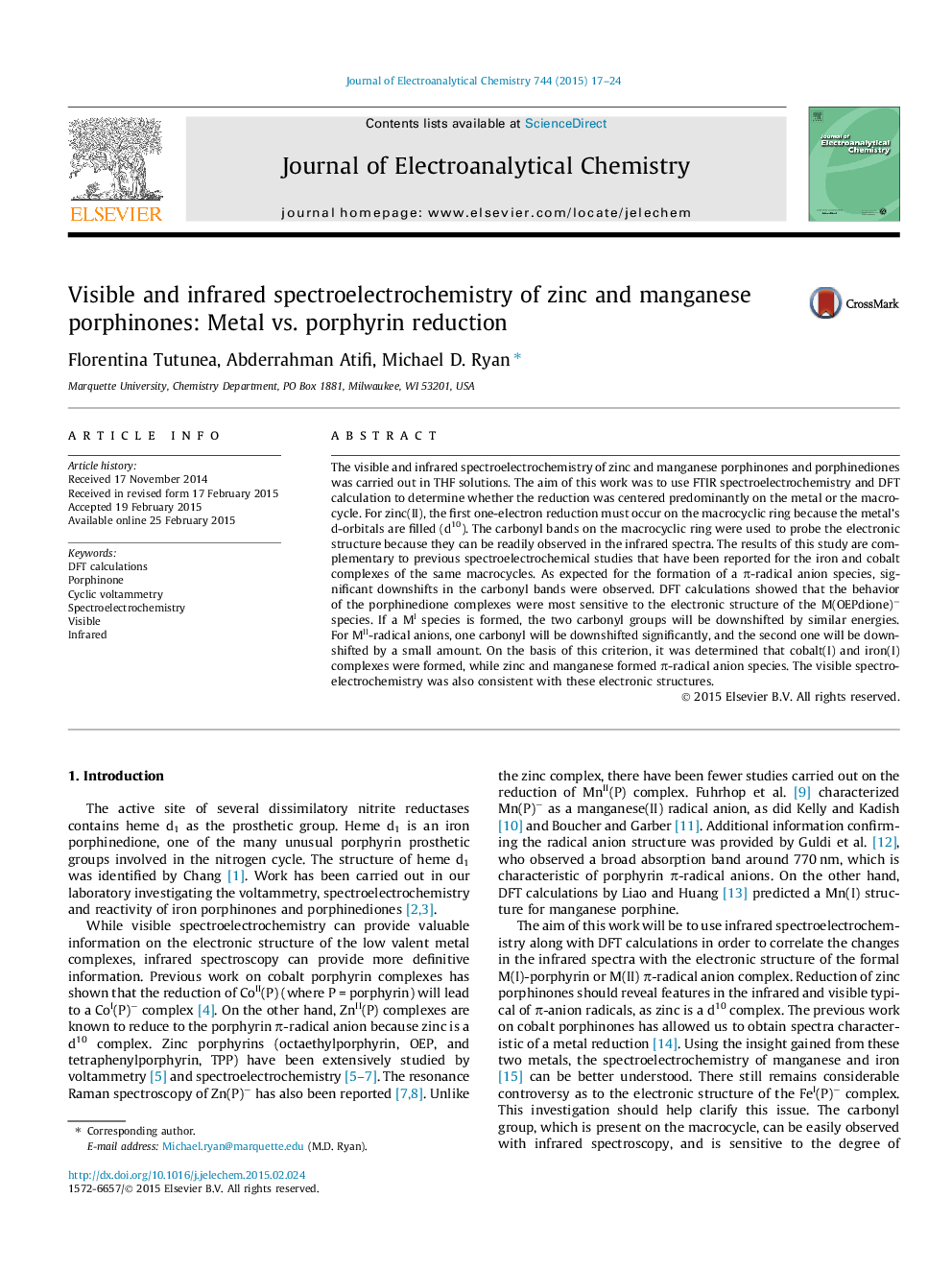| کد مقاله | کد نشریه | سال انتشار | مقاله انگلیسی | نسخه تمام متن |
|---|---|---|---|---|
| 218388 | 463198 | 2015 | 8 صفحه PDF | دانلود رایگان |

• Visible spectroelectrochemistry of manganese/zinc porphinones.
• Infrared spectroelectrochemistry of manganese/zinc porphinones.
• Use of DFT calculations to understand the electronic structure of the “M(I)” complexes.
• Correlations between νCO of the porphinediones and the oxidation state of the metal.
The visible and infrared spectroelectrochemistry of zinc and manganese porphinones and porphinediones was carried out in THF solutions. The aim of this work was to use FTIR spectroelectrochemistry and DFT calculation to determine whether the reduction was centered predominantly on the metal or the macrocycle. For zinc(II), the first one-electron reduction must occur on the macrocyclic ring because the metal’s d-orbitals are filled (d10). The carbonyl bands on the macrocyclic ring were used to probe the electronic structure because they can be readily observed in the infrared spectra. The results of this study are complementary to previous spectroelectrochemical studies that have been reported for the iron and cobalt complexes of the same macrocycles. As expected for the formation of a π-radical anion species, significant downshifts in the carbonyl bands were observed. DFT calculations showed that the behavior of the porphinedione complexes were most sensitive to the electronic structure of the M(OEPdione)− species. If a MI species is formed, the two carbonyl groups will be downshifted by similar energies. For MII-radical anions, one carbonyl will be downshifted significantly, and the second one will be downshifted by a small amount. On the basis of this criterion, it was determined that cobalt(I) and iron(I) complexes were formed, while zinc and manganese formed π-radical anion species. The visible spectroelectrochemistry was also consistent with these electronic structures.
The visible and infrared spectroelectrochemistry of zinc and manganese porphinones and porphinediones was carried out in THF solutions. The carbonyl bands on the macrocyclic ring were used to probe the electronic structure. DFT calculations showed that the shifts in the carbonyl bands of the porphinedione (OEPdione) complexes were sensitive to the electronic structure of the M(OEPdione)− species. On this basis, the oxidation state of the metal in these complexes could be assigned.Figure optionsDownload as PowerPoint slide
Journal: Journal of Electroanalytical Chemistry - Volume 744, 1 May 2015, Pages 17–24